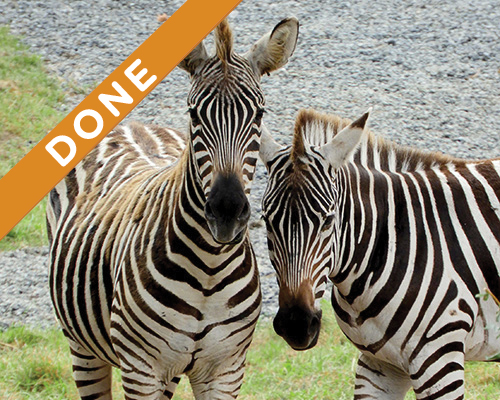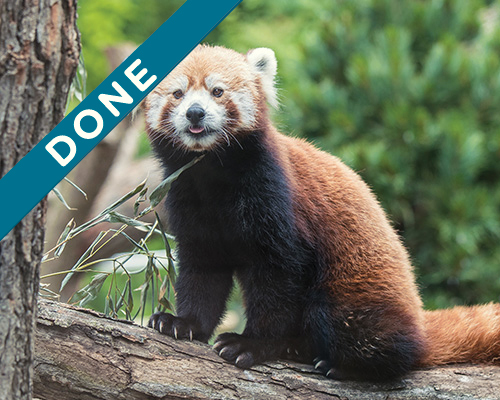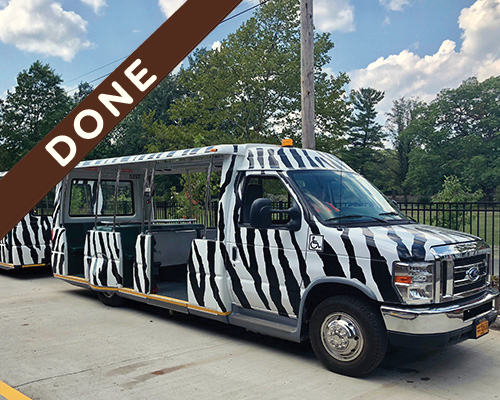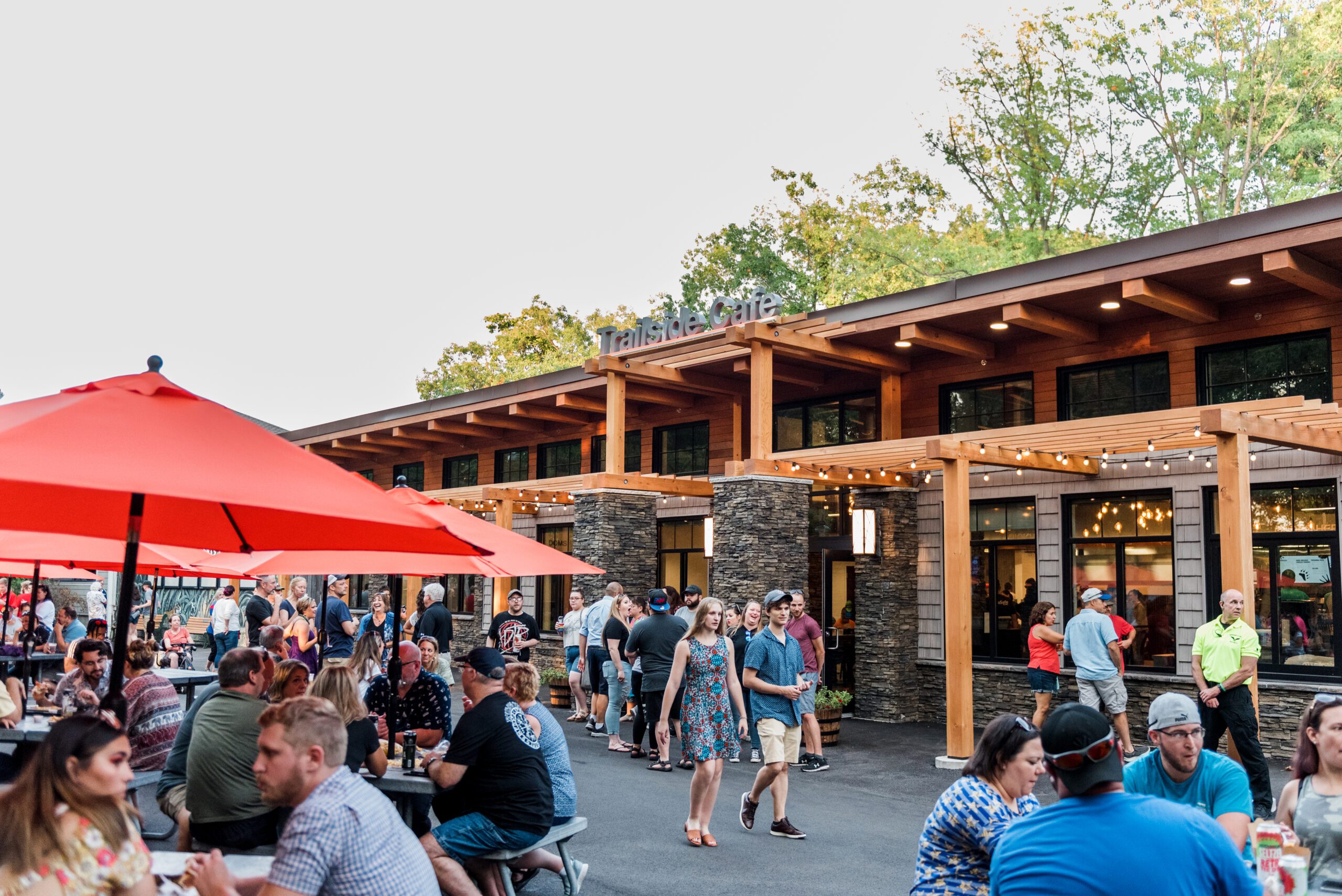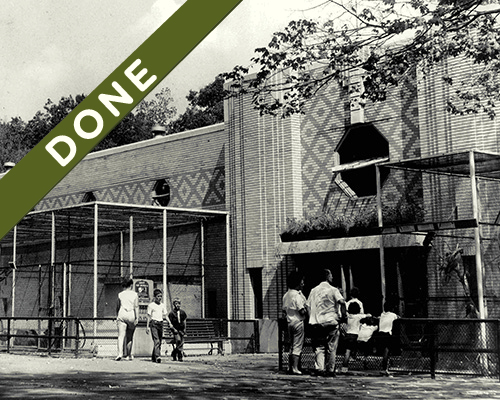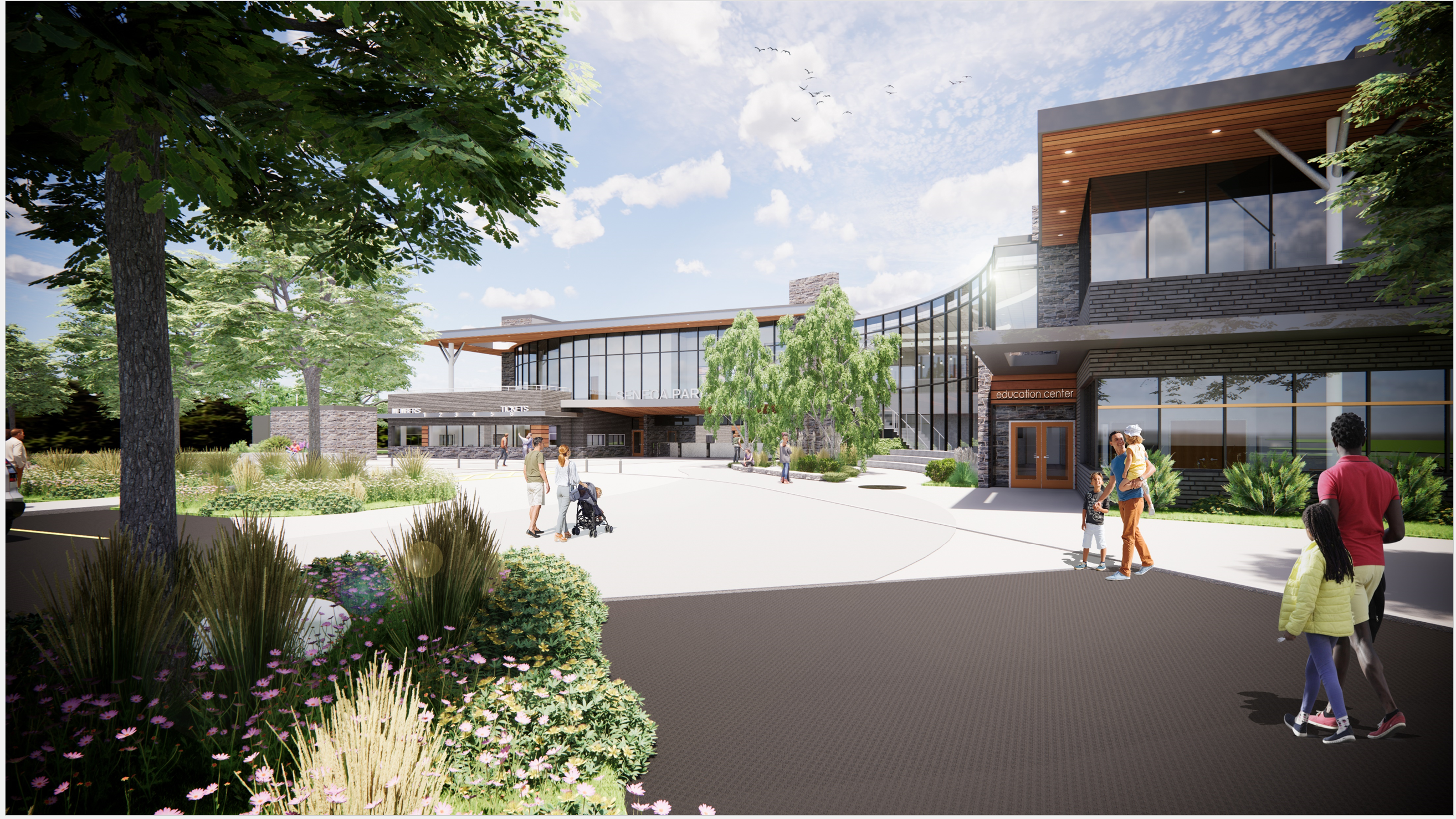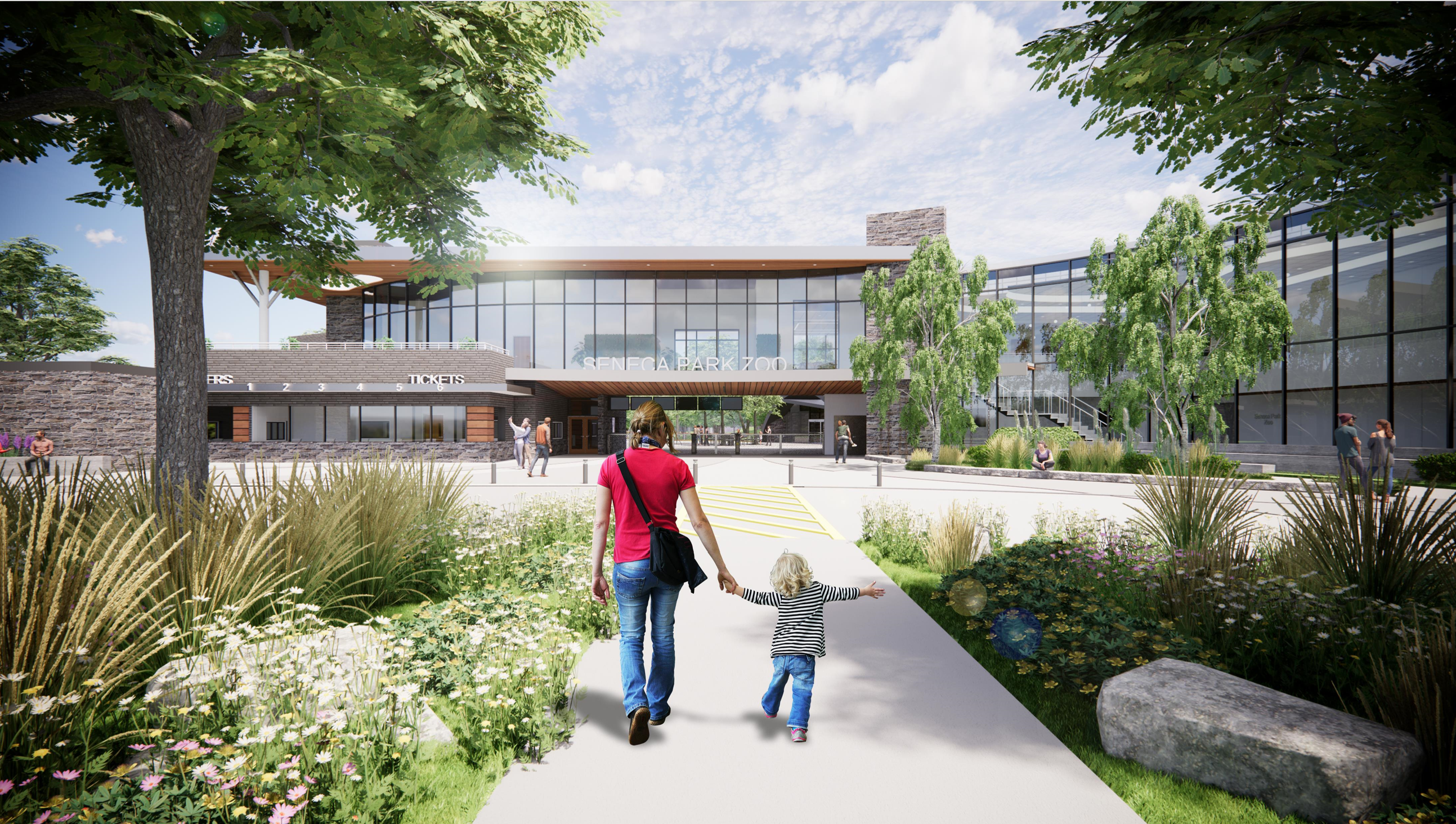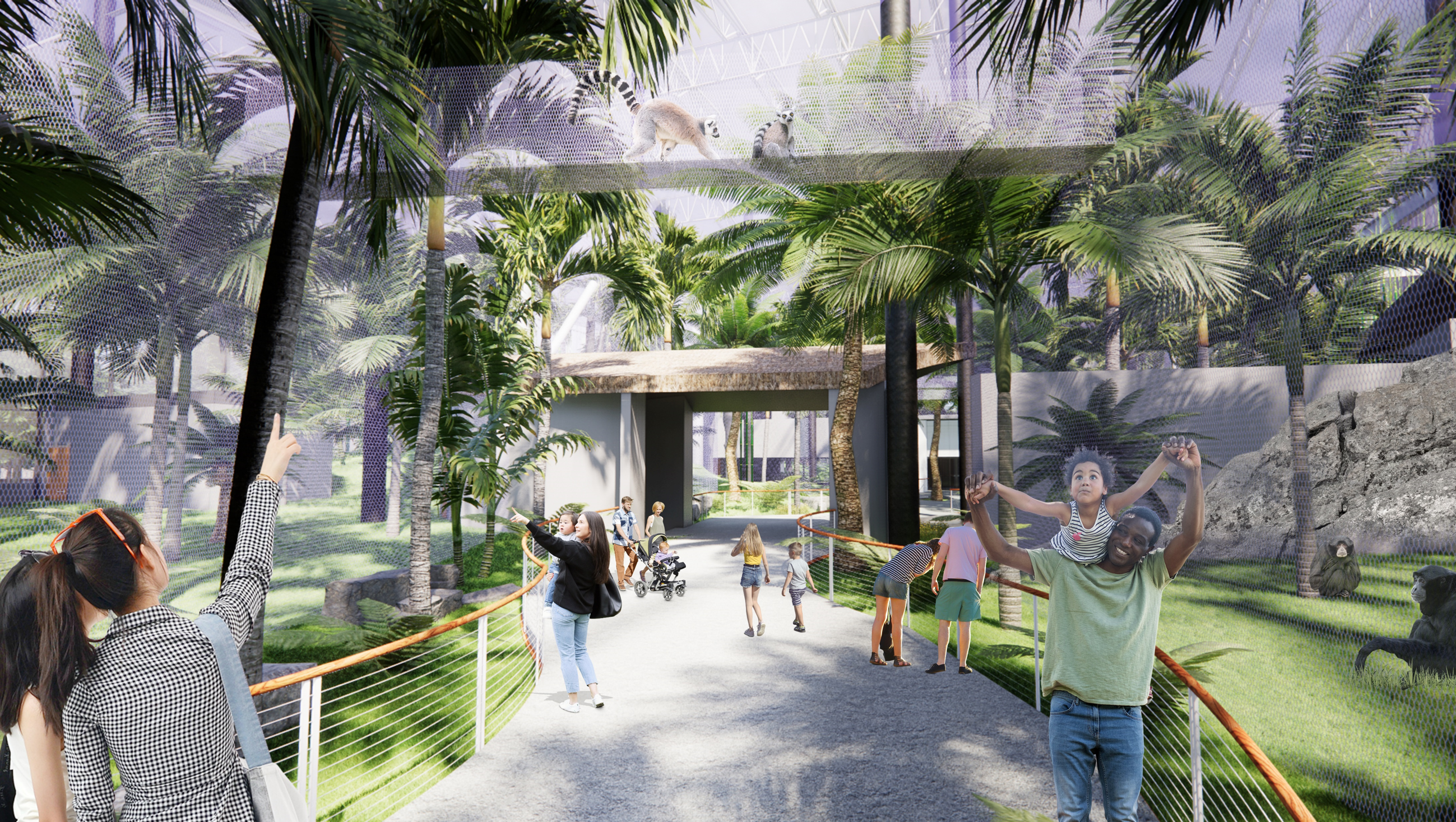On September 13, 2018, Seneca Park Zoo officially opened the Animals of the Savanna expansion. North of the current elephant barn, a five-acre expansion of A Step into Africa features animals of the African savanna. This new area includes an outdoor habitat for Masai giraffes, plains zebras, and a new habitat for the Zoo’s white rhino.
The expansion also includes an expansive Animals of the Savanna building, which has day rooms for the animals above, with habitats for other smaller species native to the Savanna, including naked mole rats, rock hyrax, Lake Malawi cichlids, buffalo weavers, golden-breasted starling, African bush vipers, and more.
Guests will have the opportunity to feed the giraffes at both indoor and outdoor feeding stations in the future. The Savanna Outpost is a retail shop next to the tram stop in Animals of the Savanna. It carries a variety of merchandise, souvenirs, ‘grab-and-go’ food options, and beverages. Another set of restrooms is available at the Savanna Outpost, accessible from behind the building facing the tram. You can catch the tram in either of two locations: in the front of the Zoo by the ZooShop or by the Savanna Outpost. Tickets for a one-way ride are $2 for adults and $1 for youth and seniors, and can be purchased at the front gate, ZooShop, Eagle’s Landing Café, Crater Canteen or at the Savanna Outpost. The tram goes through beautiful Seneca Park to take guests from one end of the Zoo to the other. In addition to day rooms for the giraffes, zebras, and rhino, the Animals of the Savanna building features a Micro-Habitat Tree with small habitats for reptiles and amphibians and two aviaries with birds native to the African savanna. And don’t miss the naked mole rat colonies!

